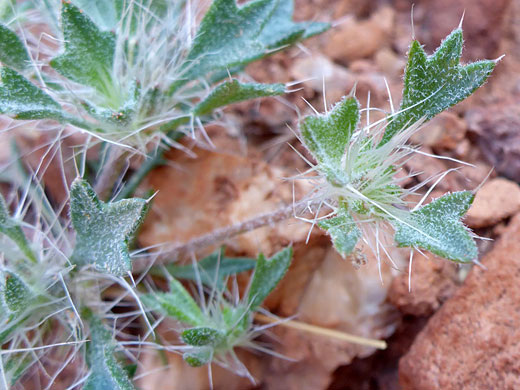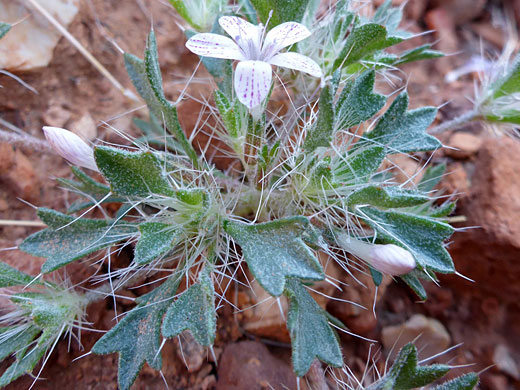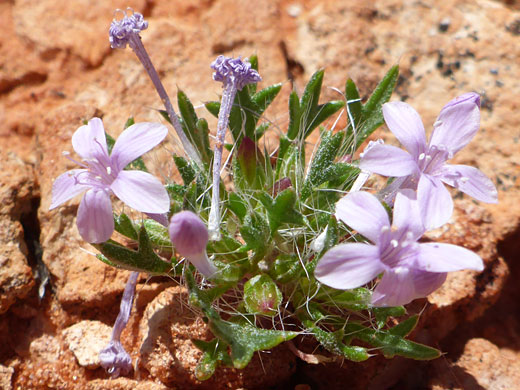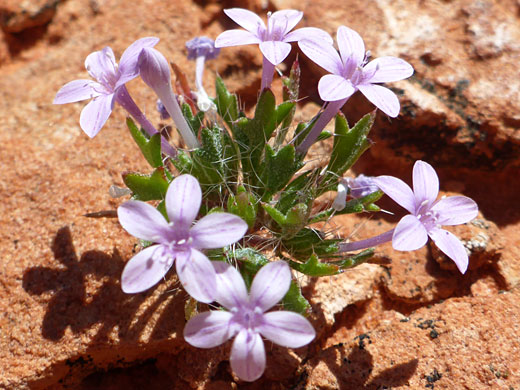Langloisia Setosissima, Bristly Langloisia
Plants > Wildflowers > Polemoniaceae > Langloisia Setosissima
Common name:
Bristly langloisia
Family:
Scientific name:
Langloisia setosissima
Main flower color:
Range:
The Mojave Desert and adjacent areas; also Idaho and southeast Oregon
Height:
Up to 3 inches
Habitat:
Gravelly or sandy locations - washes, hillsides and flats, from sea level to 6,000 feet
Leaves:
Linear to oblanceolate, hairy, up to 0.7 inches long, with 3 or 5 spine-tipped teeth
Season:
January to June
There are two subspecies of langloisia setosissima, with somewhat different flowers. The most widespread is ssp setosissima, for which the corolla is uniformly colored white to pale pink, crossed with lengthwise purple dots and lines, while for ssp punctata the flower center is dark purple and the corolla lobes have two yellow or orange patches in addition to the purple dots. Ssp punctata occurs more to the west of the region, and accounts for the disjunct populations in Idaho and Oregon.
Leaves grow along the stem, generally not at the base; they have a a terminal lobe, or tooth, and one or two pairs of lateral lobes, all tipped with a relatively long white spine. Leaf surfaces are covered by bristly, branched, non-glandular hairs. Flowers have a bristle-tipped calyx (0.2 inches long) of five equal lobes, and a funnel-shaped corolla with exserted stamens. Flowers are held slightly above the leaves. The corolla lobes are about twice as long as the corolla tube for ssp punctata, and a third as long for ssp setosissima.
Leaves grow along the stem, generally not at the base; they have a a terminal lobe, or tooth, and one or two pairs of lateral lobes, all tipped with a relatively long white spine. Leaf surfaces are covered by bristly, branched, non-glandular hairs. Flowers have a bristle-tipped calyx (0.2 inches long) of five equal lobes, and a funnel-shaped corolla with exserted stamens. Flowers are held slightly above the leaves. The corolla lobes are about twice as long as the corolla tube for ssp punctata, and a third as long for ssp setosissima.
All Contents © Copyright The American Southwest | Comments and Questions | Contribute | Site Map







